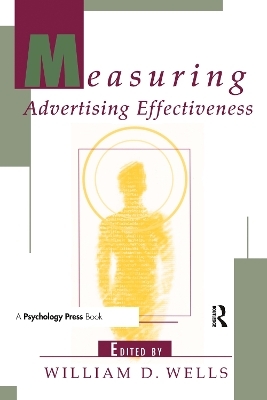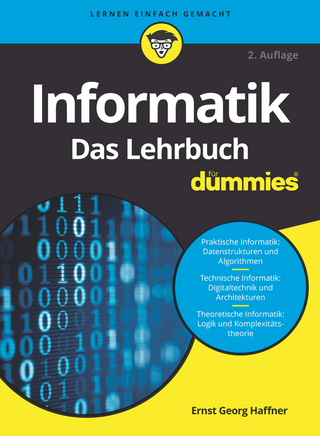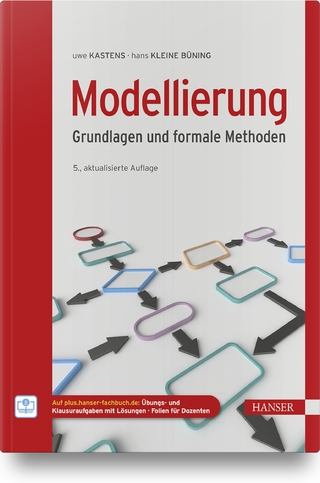
Measuring Advertising Effectiveness
Psychology Press (Verlag)
978-0-8058-2812-2 (ISBN)
This volume includes edited and revised versions of the papers delivered and discussed at the recent Advertising and Consumer Psychology Conference. Following the theme of the conference -- "Measuring Advertising Effectiveness" -- the book blends academic psychology, marketing theory, survey methodology, and practical experience, while simultaneously addressing the problems and limitations of advertising.
Acknowledging that advertisements are subtle, diverse, complex phenomena that require detailed investigation, this compilation explores the multidimensional nature of advertising's diverse effects from both academic and applied perspectives. Updates on theories and methods -- along with expert commentaries -- help to make this a valuable collection that will be of interest to advertising and marketing specialists and communications experts alike.
William D. Wells
Contents: Preface. Part I: Effects and Effectiveness.C. Wright-Isak, R.J. Faber, L.R. Horner, Comprehensive Measurement of Advertising Effectiveness: Notes From the Marketplace. W.A. Cook, A.J. Kover, Research and the Meaning of Advertising Effectiveness: Mutual Misunderstandings. E. Thorson, Comment on Chapters 1 and 2. Part II: Subtle Processing.S. Shapiro, S.E. Heckler, D.J. MacInnis, Measuring and Assessing the Impact of Preattentive Processing on Ad and Brand Attitudes. L. Percy, Comment on Chapter 3. Y. Yi, Advertising Effectiveness and Indirect Effects of Advertisements. J.C. Crimmins, Comment on Chapter 4. S. Law, S.A. Hawkins, Advertising Repetition and Consumer Beliefs: The Role of Source Memory. Part III: The ELM Model.C.P. Haugtvedt, J.R. Priester, Conceptual and Methodological Issues in Advertising Effectiveness: An Attitude Strength Perspective. J.C. Crimmins, Inference and Impact. W.D. Wells, Comment on Chapters 6 and 7. Part IV: Cognitive Elaboration.P. Lebenson, M. Blackston, Pretesting Advertising Using Cognitive Response Analysis: Some Conclusions and Hypotheses Based on Practical Experience. S. Shavitt, M.R. Nelson, Comment on Chapter 8. M.R. Nelson, S. Shavitt, A. Schennum, J. Barkmeier, Prediction of Long-Term Advertising Effectiveness: New Cognitive Response Approaches. D.L. Stephens, J.E. Russo, Extension of the Cognitive Response Approach to Predicting Postadvertisement Attitudes. W.D. Wells, Comment on Chapters 1 Through 10. Part V: Context.J. Gregan-Paxton, B. Loken, Understanding Consumer Memory for Ads: A Process View. V.C. Broach, T.J. Page, Jr., R.D. Wilson, The Effects of Program Context on Advertising Effectiveness. B. Wansink, Comment on Chapter 12. A. Mehta, Comment on Chapter 12. C. Wright-Isak, Comment on Chapter 12. E. Thorson, X. Zhao, Television Viewing Behavior as an Indicator of Commercial Effectiveness. P. Vuokko, The Determinants of Advertising Repetition Effects. C. Wright-Isak, Comment on Chapter 14. W.D. Wells, Comment on Chapters 11 Through 14. Part VI: Copy Testing.L. Percy, J.R. Rossiter, A Theory-Based Approach to Pretesting Advertising. E. Thorson, Comment on Chapter 15. R.W. Olshavsky, A. Kumar, Top-Down, Stimulus-Based, and Bottom-Up Processes in Brand Choice: Some Implications for the Measurement of Advertising Effectiveness. L. Percy, Comment on Chapter 16. A. Mehta, Comment on Chapter 16. A.R. Kuse, The Measurement of Advertising Effectiveness: Empirical Learning and Application. B. Wansink, Comment on Chapter 17. A. Mehta, S.C. Purvis, Evaluating Advertising Effectiveness Through Advertising Response Modeling (ARM). B. Wansink, Comment on Chapter 18. T.J. Reynolds, J.C. Olson, J.P. Rochon, A Strategic Approach to Measuring Advertising Effectiveness. C. Wright-Isak, Comment on Chapter 19. B. Wansink, M.L. Ray, Developing Copy Tests That Estimate Brand Usage. J. Lucas, D. Prensky, Evaluating the Effectiveness of Place-Based Media. Part VII: Afterword.W.D. Wells, An Interview With Mr. X.
| Erscheint lt. Verlag | 12.6.1997 |
|---|---|
| Verlagsort | Philadelphia |
| Sprache | englisch |
| Maße | 152 x 229 mm |
| Gewicht | 566 g |
| Themenwelt | Geisteswissenschaften ► Psychologie |
| Mathematik / Informatik ► Informatik ► Theorie / Studium | |
| Sozialwissenschaften ► Soziologie ► Empirische Sozialforschung | |
| Wirtschaft ► Betriebswirtschaft / Management ► Marketing / Vertrieb | |
| ISBN-10 | 0-8058-2812-5 / 0805828125 |
| ISBN-13 | 978-0-8058-2812-2 / 9780805828122 |
| Zustand | Neuware |
| Informationen gemäß Produktsicherheitsverordnung (GPSR) | |
| Haben Sie eine Frage zum Produkt? |
aus dem Bereich


